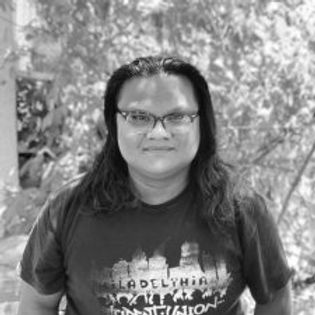I sat on my front stoop, waiting for an email that would make or break an event for Philadelphia Student Union’s spring campaign. We were days away from hosting a public hearing on school underfunding across the state, but I still hadn’t received video testimony from the one high school student outside Philly who had agreed to testify. Six weeks of work coordinating this hearing hinged on that email with her testimony.
The Philadelphia Student Union (PSU) is a continuous, 26-year experiment in youth power. Many things have changed in and around our organization since our founding in 1995, but throughout that time we have remained grounded in a foundational premise — that young people are more than the future; they have the capacity to unite across their differences to lead their schools and communities right now. We demonstrate this leadership through organizing. Our members bring their peers together to wage their collective power.
Our school funding campaign this past spring is a perfect example of how PSU approaches youth leadership and organizing. School funding is a longstanding issue in Pennsylvania. Our state ranks near the bottom across the country in its contributions to basic education funding, and students feel the effects of this lack of funding every day. A member leader, Aden, told me about the work of the Education Law Center (ELC) calling on the state to make a larger contribution to education funding. I encouraged Aden to take the issue to other PSU members to see what they thought. Aden brought the idea to their school chapter first before proposing it to members at our other schools. By February, students across our schools decided to make funding the priority issue for our spring campaign.
I’m proud of the campaign’s youth leadership. Our members decided the best way to support ELC’s ongoing campaign was to host a public hearing at which students from across the state would testify to the conditions at their schools and ask elected officials to increase school funding in the next state budget. PSU’s Youth Leadership Team, a cohort of youth organizing interns, devised a plan to reach out to students across the state, researched contacts, and put together a presentation on the issue of underfunded schools. After presenting to interested groups of students, the Youth Leadership Team planned to invite them to testify at our hearing.
School funding has always been an uphill battle in Pennsylvania. It is a state-wide problem and requires state-wide participation — success is only possible when rural and suburban districts combine with urban centers like Philadelphia to call on state legislators to act. This kind of unity, however, requires coordination and organizing across a very large state, posing a challenge that has bedeviled education funding advocates for years.
I saw a potential opening this spring, however. The pandemic shutdown made video conferencing a significant part of young people’s lives. Just a year before, connecting with students and parents from Lancaster would have meant a costly drive or awkward telephone call. Now, that kind of connection was a Zoom link or Google hangout away — potentially creating a new path to building state-wide power for the school funding fight.
We cold emailed and messaged hundreds of teachers, youth organizations, and individual students at severely underfunded districts throughout the state, but we were only able to secure one presentation. Spring is a challenging time for both teachers and students because it’s testing season, but we should have structured the outreach plan more rigorously, with formal roles and built-in deadlines. We also should have been less ambitious with our targeting, focusing on schools where we had existing contacts or where there was existing organization. Student leaders had success cold contacting students for a previous project, and we thought that approach might work for our campaign, but it was not effective. This experience is a reminder to always mind time, place, and conditions. Tactics that work in one context may not work in another.
Aden found news coverage of the Rollers Brotherhood and Sisterhood Mentorship Program, which does youth empowerment work in Steelton-Highspire School District. Steelton-Highspire is a small majority Black and brown school district 91 miles outside Philadelphia that is underfunded by over $6,800 per student. Aden reached out to the group’s teacher sponsor and we scheduled a presentation. While the Steelton-Highspire students did not initially commit to speak at our hearing, they did express interest in continued relationship building.
We still hadn’t secured a testimony from outside of Philadelphia, but we decided to move forward with the hearing anyway. Early in my organizing career, I learned that, regardless of conditions, the show must go on. If members, partners, and decision-makers think we are unreliable — that we don’t do the things we say we are going to do — then we risk losing their trust. Rescheduling, much less canceling, the hearing was not an option.
We needed to get creative if we were going to include voices outside of Philadelphia. First, we became more targeted in our outreach, focusing on smaller, urban districts as well as Philadelphia’s collar counties. Second, we mapped out our personal contacts and invited them to speak about underfunding in their town. In retrospect, this is where we should have started our outreach. Finally, we expanded our criteria, reaching out to alumni, parents, and other school stakeholders to tell their stories. Instead of requiring live participation, we also invited partners to record video testimonies or have PSU members read their stories.
Our adjustments were successful, and we put together a diverse group of speakers. Four PSU members, one Philadelphia school district parent, a recent graduate from Harrisburg, a Philadelphia teacher, and a representative from Education Law Center (who is also a teacher) agreed to testify. We were still missing one thing, though. We didn’t have any testimony from a current student outside of Philadelphia.
The reason why underfunding prevails in Pennsylvania is because communities are kept away from each other. Philadelphians are told we’re too big, too poor, and too Black and brown to be funded equitably. Meanwhile, communities like Steelton-Highspire are told they’re too small to matter in the political calculations that decide school funding. The exchange between the Philadelphia Student Union and the students at Steelton-Highspire transcended our geographic separation and could offer a model for how to organize a statewide campaign to fix the problem of underfunded schools. We needed them at our event.
I reached out to the teacher sponsor at Steelton-Highspire and explained our situation. I offered the expanded participation options for the hearing — they didn’t need to join us live. Our teacher contact committed to sending a video testimony from a student by the Thursday before the hearing. Thursday passed. On Friday, I got an update — the video was on its way. Every hour, my thumb tugged on my phone’s email app, prompting it to refresh. Finally, on Saturday evening, it came! The video was a head and shoulders shot of K., a rising senior at Steelton-Highspire High School, who spoke for a little over three minutes about conditions at her school. She was our last speaker and closed our event by summarizing the purpose of the school funding fight: “Our education is equally important to those schools that have proper funding. We deserve it.”
Reflecting on the campaign, there are two lessons that stand out. First, while technology is transforming grassroots organizing in incredible ways, the core of our work is still relationship building. The campaign this spring would not have been possible when I first started as an organizer at PSU. Teleconferencing platforms, high-speed internet, social media, and the ease young people have with this technology made our campaign possible despite distance and constraints from the pandemic. But while technology expanded the breadth of our outreach, we were not effective until we started working relationally, reaching out to people based on our shared experiences and appealing to them as collaborators in a larger fight to fix our schools. That is how we filled out our speakers list and recruited K. to speak at our event on behalf of her school district.
Second, the campaign reaffirms that youth leadership is the Philadelphia Student Union’s super power. Our member leaders identified, designed, and implemented the campaign. This approach can be challenging — some activities took more time as our members balanced working on the campaign with their other commitments as students. Centering youth leadership, however, generated a level of buy-in that kept members engaged through adversity and simplified the campaign for me as an adult staff person — I never had to wonder if we were honestly representing the interests of young people through our work because most of the campaign decisions were made by young people. Our members got a lot out of this campaign — exit interviews with our Youth Leadership Team unanimously identified the hearing as the highlight of their internship. I don’t know if it would have been as memorable if they had had less ownership of the work.
Organizing in general — and youth organizing in particular — takes us to unexpected places. Sometimes it takes our people to historic heights, changing the world and making it better. Too often, it ends in heartbreak, with communities isolated from each other and dismissed by those in power. Then there are times when it ends with us sitting at home believing that someone many miles away will pull through, knowing that we must work together to get what we need for our folks.

